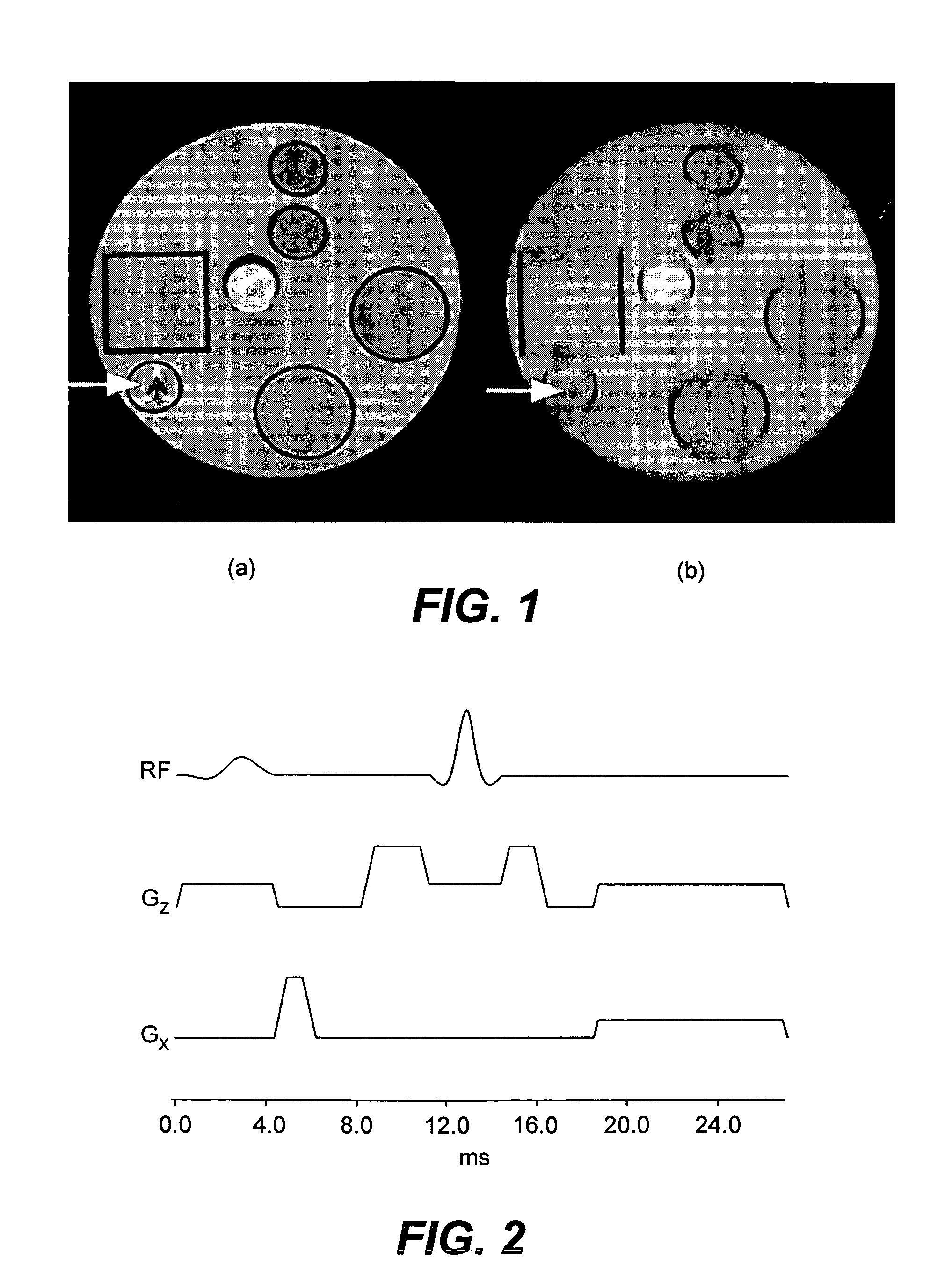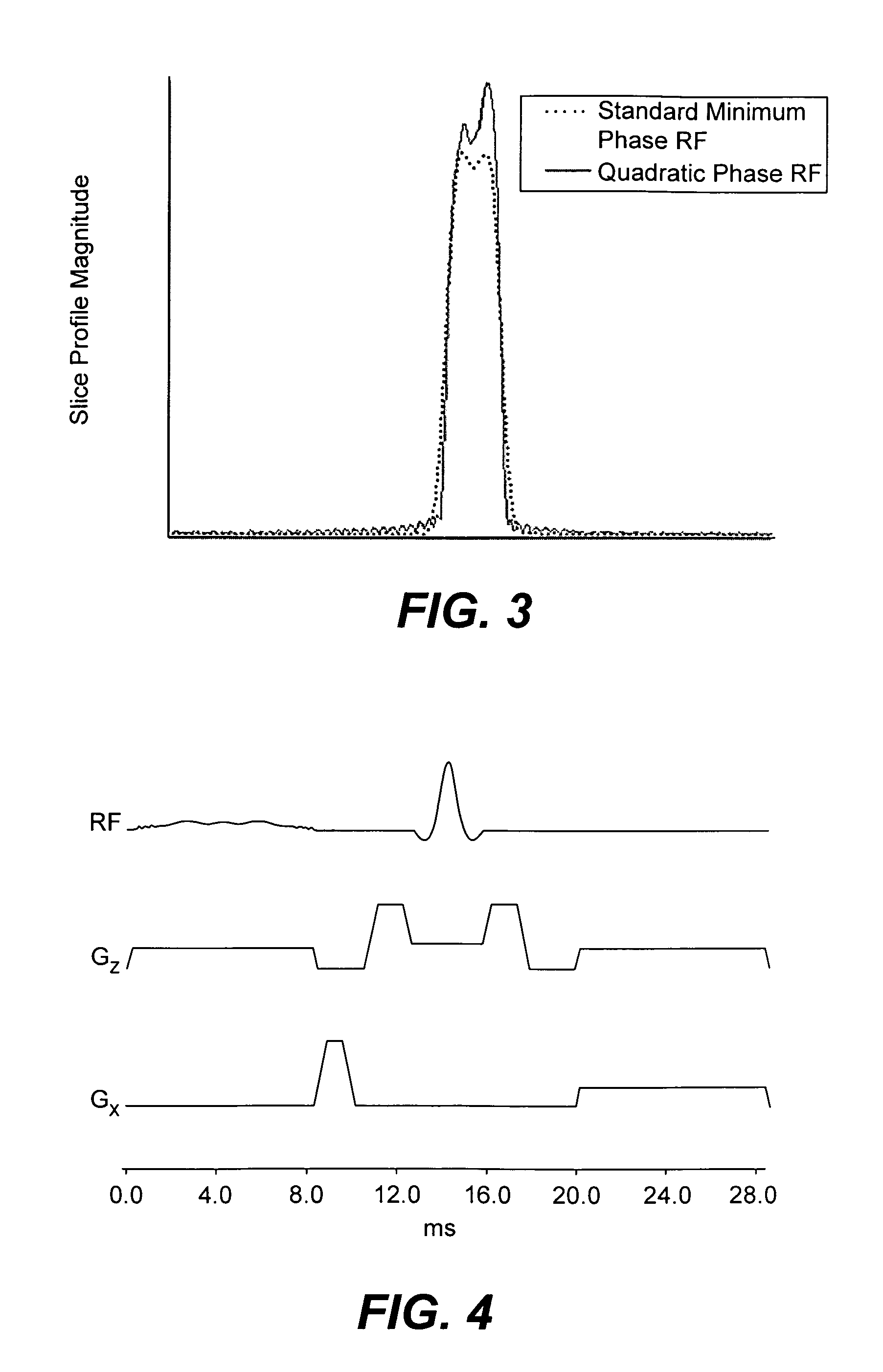Reduction of blurring in view angle tilting MRI
a technology of view angle tilting and blurring, which is applied in the field of magnetic resonance imaging (mri), can solve the problems of partial voluming effect of edges that are oriented exactly through the plane, hinder the widespread use of the technique, etc., and achieve the reduction of modulation effects of vat mri, reduce signal drop, and increase the bandwidth of readout.
- Summary
- Abstract
- Description
- Claims
- Application Information
AI Technical Summary
Benefits of technology
Problems solved by technology
Method used
Image
Examples
Embodiment Construction
[0026]As noted above, magnetic resonance imaging in the presence of metal such as metallic prostheses, pins, screws, and interventional devices have warping during slice selection and distorts during frequency encoding. Distortions in the frequency encoding direction can be reduced by increasing the receive bandwidth, at a cost in signal-to-noise ratio. View angle tilting (VAT) has also been proposed for reducing metal artifacts around prostheses and interventional devices such as needles and cryoprobes.
[0027]In verifying the invention, two sets of experiments have been conducted. In a first set of experiments, the blurring from slice profile modulation was identified. In a second set of experiments, several pulse sequences that match readout duration to the width of the main lobe of the RF pulse are designed which have multiple gradient echo readout. The multiple readouts are combined to produce VAT images with reduced blurring.
[0028]In the first set of experiments, a spin echo pul...
PUM
 Login to View More
Login to View More Abstract
Description
Claims
Application Information
 Login to View More
Login to View More - R&D
- Intellectual Property
- Life Sciences
- Materials
- Tech Scout
- Unparalleled Data Quality
- Higher Quality Content
- 60% Fewer Hallucinations
Browse by: Latest US Patents, China's latest patents, Technical Efficacy Thesaurus, Application Domain, Technology Topic, Popular Technical Reports.
© 2025 PatSnap. All rights reserved.Legal|Privacy policy|Modern Slavery Act Transparency Statement|Sitemap|About US| Contact US: help@patsnap.com



